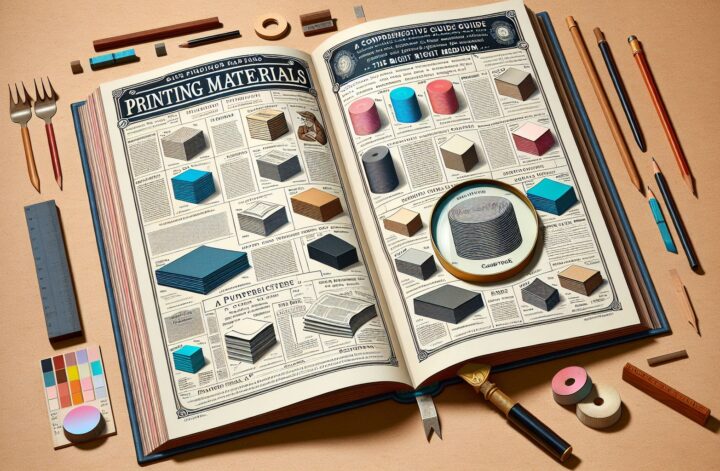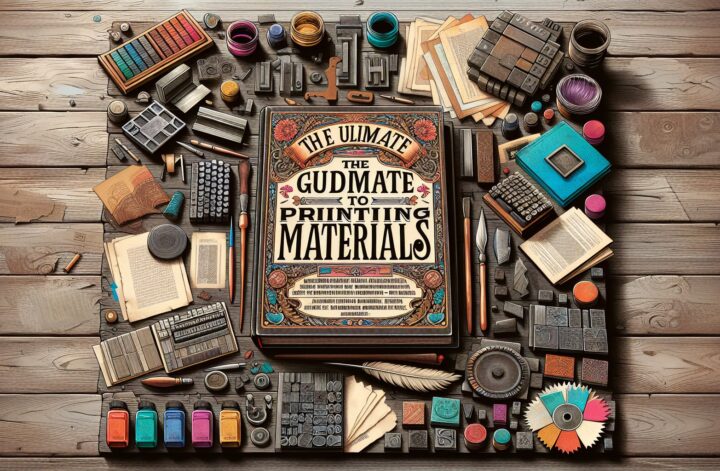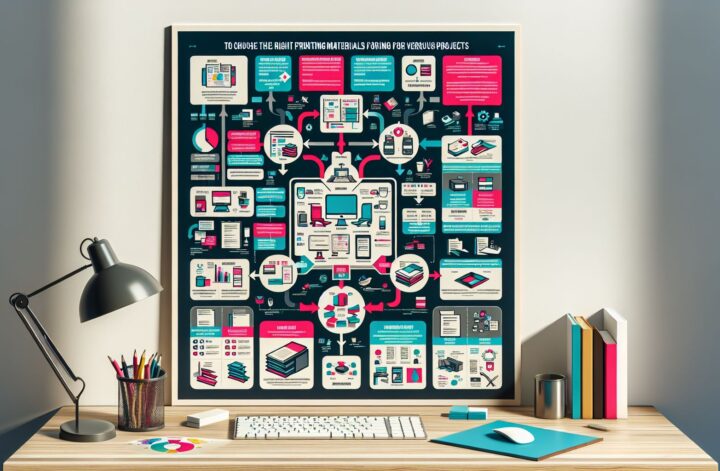Printing is an essential part of our everyday lives. From promotional materials to personal projects, having the right printing medium is crucial to achieving the desired outcome. With a wide range of options available, it can be overwhelming to select the ideal material for your printing needs. This comprehensive guide will walk you through the most commonly used printing materials, helping you make informed decisions to create stunning and impactful prints.
Understanding Different Printing Materials
When it comes to printing, choosing the right material goes beyond aesthetics. Factors such as durability, texture, and cost-effectiveness should also be considered. Let’s dive into an array of materials commonly used in the printing industry.
Paper
Paper is perhaps the most recognizable printing medium. Its versatility and cost-effectiveness make it a popular choice across various applications. From invitations to business cards, flyers to posters, paper caters to a wide range of printing requirements.
Different types of paper are available, each with its unique characteristics. Here are a few commonly used paper types:
1. Bond Paper
Bond paper, also known as writing paper, is a lightweight, uncoated paper suitable for everyday printing needs. It is commonly used for letters, memos, and official documents. This cost-effective paper is a favorite among businesses and individuals alike.
2. Coated Paper
Coated paper has a glossy, semi-glossy, or matte finish. It offers high-quality prints with vibrant colors, making it ideal for brochures, catalogs, and promotional materials. The coating on the paper helps prevent ink absorption, resulting in sharper images and text.
3. Cardstock
Cardstock is a thicker, heavier paper that provides durability and a premium feel. It is widely used for business cards, postcards, invitations, and packaging materials. With its robust nature, cardstock is perfect for projects requiring a more substantial presence.
4. Recycled Paper
As environmental concerns rise, the demand for recycled paper has increased. This eco-friendly option is made from post-consumer waste, reducing the need for cutting down trees. Recycled paper is an excellent choice for businesses and individuals looking to minimize their environmental impact.
Synthetic Materials
While paper is versatile and widely used, certain printing applications demand a more durable and weather-resistant option. Synthetic materials offer these unique characteristics, making them suitable for various outdoor and long-term applications.
1. Vinyl
Vinyl is a synthetic material known for its durability and flexibility. It is commonly used for banners, signage, and vehicle wraps due to its ability to withstand harsh weather conditions. Vinyl prints can retain their quality and vibrancy for an extended period, making them suitable for long-term outdoor use.
2. Polyester
Polyester is another synthetic material used in printing that offers excellent durability and resistance to tearing and water. Its high strength-to-weight ratio makes it suitable for applications such as outdoor flags, fabric banners, and wearable promotional materials. Polyester prints can withstand the elements while maintaining their original colors and quality.
Specialty Materials
Beyond traditional paper and synthetic materials, various specialty materials cater to specific printing needs. These materials often provide unique textures, finishes, or functionality, adding an extra touch to your prints.
1. Canvas
Canvas is a textured, heavy-duty material primarily associated with fine art reproductions and gallery wraps. Its finely woven fabric structure provides a high-quality, luxurious look and feel to printed images. Canvas prints can add elegance to home décor, museums, or photography exhibitions.
2. Acrylic
Acrylic, also known as Plexiglas, is a transparent, glass-like material that adds a modern and sophisticated touch to prints. Acrylic prints offer vibrant colors and excellent optical clarity compared to traditional glass framing. They are often used for showcasing photographs, artwork, and corporate displays.
Choosing the Right Printing Material
Selecting the suitable printing material can significantly impact the final result of your project. Key considerations when making this decision include the intended application, budget, desired durability, and aesthetic preferences. To assist you in choosing the right material, consider the following factors:
1. Project Type and Application
The type of project and its intended use should dictate your choice of printing material. For instance, a brochure or business card requires a sturdy material that can withstand frequent handling. On the other hand, a poster or wall art may benefit from a canvas or specialty material to enhance its visual appeal.
2. Durability and Lifespan
Evaluate how long you want your prints to last. If your project requires long-term outdoor exposure, consider using synthetic materials, such as vinyl or polyester, to ensure they withstand weather conditions. For short-term indoor projects, paper or cardstock may suffice.
3. Budget
Consider your budget when selecting a printing material. Specialty and synthetic materials are generally more expensive than paper options. While they may enhance the visual appeal and longevity of prints, it is essential to find a balance between quality and cost.
4. Aesthetic Preferences
Think about the visual impact you want to create with your prints. Factors such as texture, finish, and color vibrancy can contribute to the overall appeal. Experimenting with different materials can help you achieve the desired visual outcome and evoke the intended emotions.
Conclusion
Choosing the right printing material is a crucial step in achieving the desired outcome for your printing projects. By considering factors such as project type, durability, budget, and aesthetic preferences, you can make informed decisions that align with your goals.
Whether you opt for traditional paper, durable synthetic materials, or specialty options, understanding the characteristics and applications of each medium empowers you to unleash your creativity and bring your ideas to life. So, next time you embark on a printing project, take a moment to explore the vast array of materials available and make a choice that elevates your prints to new heights.





